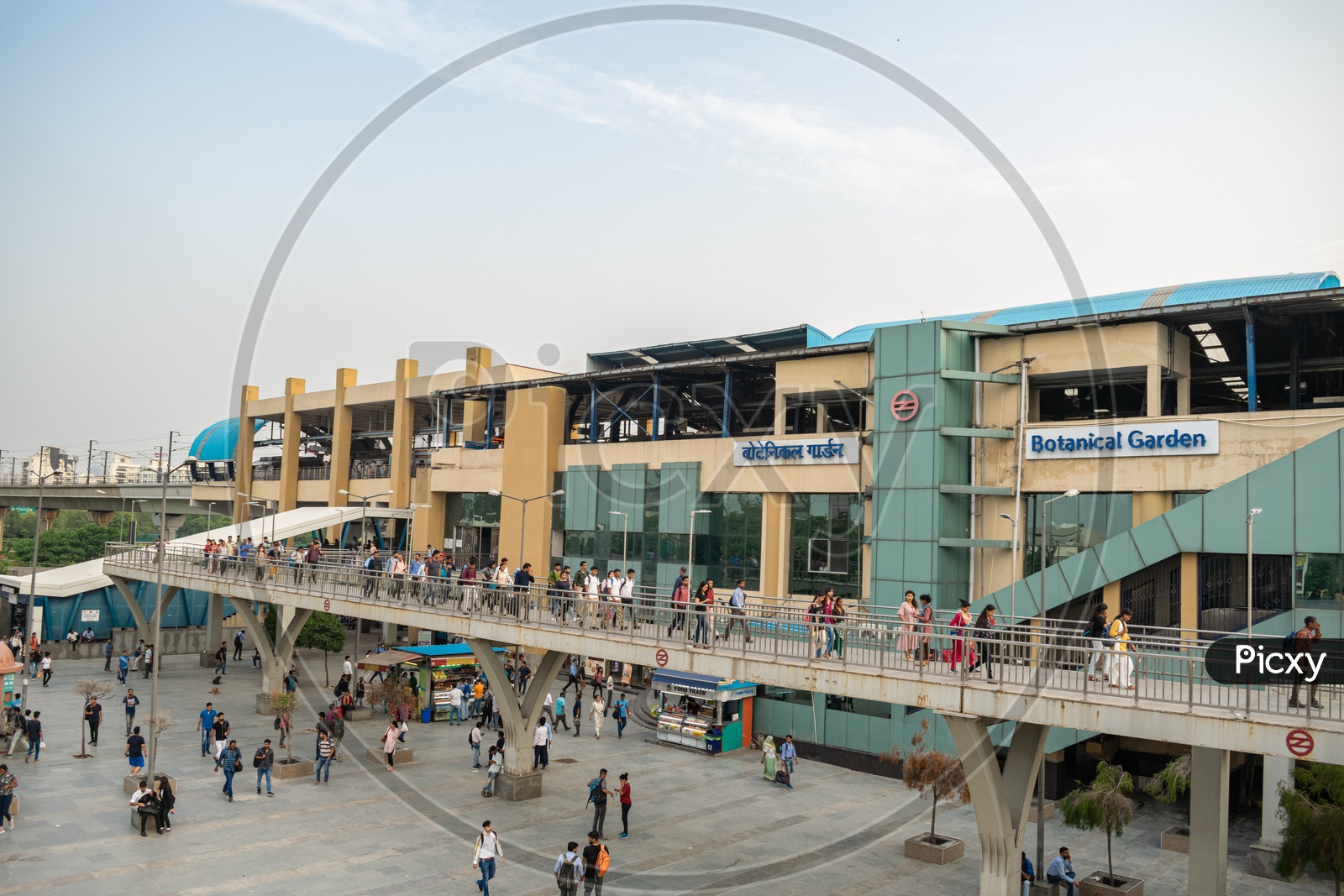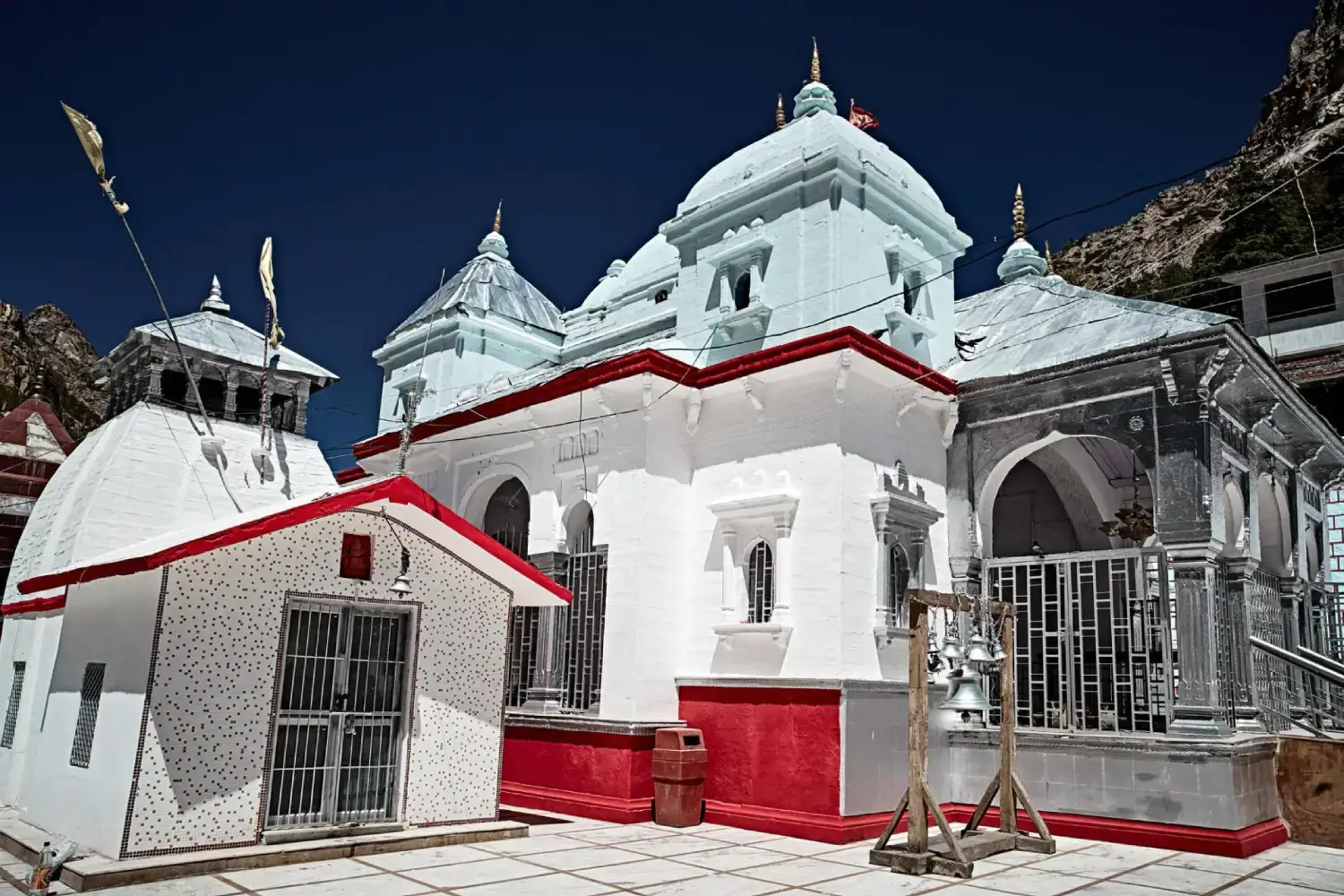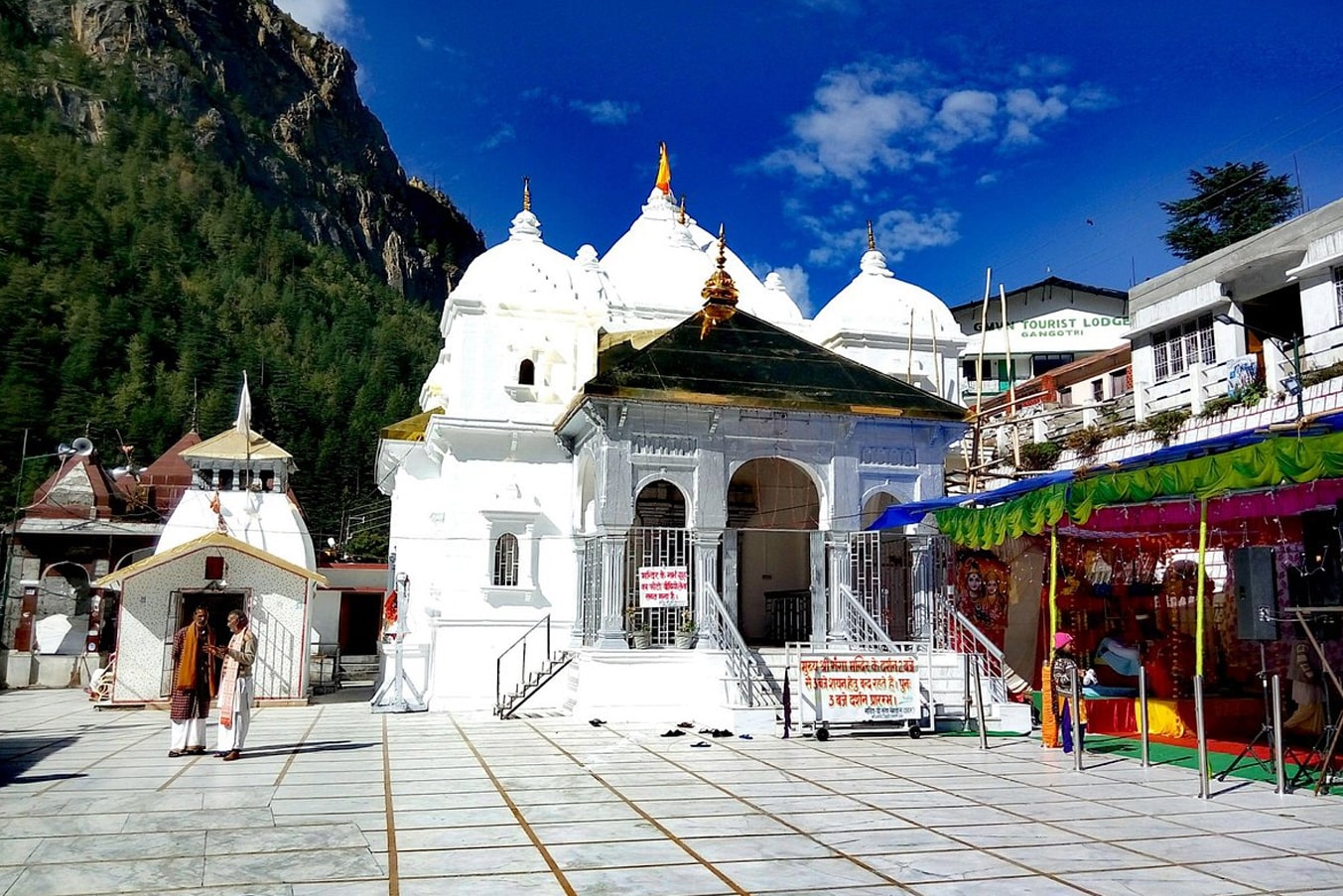Harsil Valley Travel Guide: Nature, Treks & Hidden Gems
Published on May 25, 2025
Overview
Tucked away in the heart of Uttarkashi district, Harsil Valley is a pristine Himalayan retreat where nature, adventure, and spirituality converge. Far from the noise of commercial hill stations, Harsil offers travelers the perfect balance of serenity, scenic landscapes, and culturally enriching experiences. Often referred to as the “hidden gem of Uttarakhand,” Harsil remains untouched by mass tourism, making it an ideal destination for peace seekers, photographers, trekkers, and pilgrims alike.
Located on the banks of the Bhagirathi River, Harsil serves as a crucial stop for those heading to the holy town of Gangotri, but its charm goes far beyond being just a transit point. From the historic Gartang Gali trek to spiritual immersion in Gangotri Dham, and from tranquil riverside walks to traditional Himalayan villages like Bagori, Harsil promises a deeply fulfilling travel experience.
? 2 Nights 3 Days Harsil Valley – Gangotri – Gartang Gali Tour Itinerary
Departure from: Delhi Botanical Garden Metro Station
Destinations Covered: Harsil Valley, Gangotri Dham, Gartang Gali, Bagori Village, Khedi Waterfall
? Day 0: Departure from Delhi
-
Evening 8:00 PM – Assemble at Botanical Garden Metro Station, Noida.
-
Meet the tour coordinator, check documents, and start overnight journey to Harsil Valley via Haridwar – Uttarkashi.
-
Overnight in Tempo Traveller / AC Traveller Coach
-
Meals: None (en-route dinner stop)

? Day 1: Arrival in Harsil – Waterfalls & Village Exploration
-
Morning 9:00 AM – Reach Harsil Valley, check-in at riverside homestay or cottage.
-
Freshen up, breakfast, rest for a while amidst pine forests & Bhagirathi River views.
-
Post-lunch:
-
Visit Khedi Waterfall – a scenic, less-explored fall surrounded by alpine woods.
-
Explore Bagori Village – known for its Tibetan-style houses and warm local culture.
-
-
Evening at leisure near riverbank, followed by bonfire & dinner under starry skies.
-
Overnight Stay: Harsil
-
Meals: Breakfast, Lunch, Dinner
? Day 2: Gartang Gali Trek + Gangotri Dham + Surya Kund
-
Early morning tea and light breakfast
-
Depart for Gartang Gali Trek – historic Indo-Tibetan wooden bridge trail (~2.5 km, easy hike).
-
Enjoy breathtaking views of Jadh Valley and the gorge below.
-
-
Continue the drive to Gangotri Temple (25 km)
-
Darshan at Gangotri Dham, explore Surya Kund and Bhagirath Shila.
-
-
Return to Harsil by evening
-
Optional riverside walk or café visit
-
Overnight Stay: Harsil
-
Meals: Breakfast, Dinner

? Day 3: Lama Top Trek (Optional) – Return to Delhi
-
Early risers can opt for a short Lama Top viewpoint hike for 360° Himalayan views.
-
Return to stay, have breakfast, freshen up, and check out.
-
Begin the return journey to Delhi via Uttarkashi – Chamba – Haridwar
-
Reach Delhi (Botanical Garden) by late night (approx. 11 PM – 12 AM)
-
Meals: Breakfast
How to Reach Harsil Valley from Delhi
Harsil is approximately 470 km from Delhi, and the journey can take 12–14 hours by road. Here's how to get there:
-
By Road: Best option. You can drive or book a taxi via Dehradun or Rishikesh to Uttarkashi and then onward to Harsil.
-
By Train: Nearest railway station is Dehradun. From there, it’s a 7–8 hour drive.
-
By Air: The nearest airport is Jolly Grant Airport (Dehradun), about 230 km away.
Best Time to Visit Harsil Valley
The valley is best visited in two main seasons:
-
Summer (April to June): Pleasant weather, lush greenery, clear skies.
-
Autumn (September to November): Crisp air, golden landscapes, great for trekking and photography.
Avoid July and August due to monsoon-related landslides, and December to February if you're not prepared for heavy snow and roadblocks.

Top Attractions & Experiences in Harsil Valley
Overview:
Nestled along the banks of the Bhagirathi River, surrounded by snow-capped Himalayan peaks and pine-covered slopes, Harsil Valley is one of Uttarakhand’s most serene and unexplored gems. Situated at an altitude of approximately 2,620 meters in the district of Uttarkashi, Harsil serves as a gateway to Gangotri Dham and is often considered a secret haven for those seeking peace, pristine nature, and local cultural charm. This guide highlights the top attractions and experiences that make Harsil Valley a must-visit destination for every traveler.
✅ 1. Harsil Village: Tranquility Amidst Pines
The main village of Harsil is known for its untouched beauty. With wooden homes, apple orchards, and the soothing sound of the Bhagirathi River flowing through it, this is the perfect place to slow down and reconnect with nature. A walk through the village paths reveals native Himalayan architecture and smiling faces of locals, mostly of the Bhotia tribe, who are known for their hospitality and simple lifestyle.
✅ 2. Bhagirathi River Banks: Nature's Healing Touch
One of the defining features of Harsil is the Bhagirathi River, which flows gracefully through the valley. Spending time along the rocky banks of this glacier-fed river is a deeply calming experience. Whether it’s for a riverside walk, a morning meditation, photography, or simply dipping your feet in the icy waters, the riverbank offers countless personal moments with nature.

✅ 3. Khedi Waterfall: A Hidden Cascade
Just a short walk or drive from Harsil village, Khedi Waterfall is one of the lesser-known but absolutely stunning natural spots. Surrounded by alpine trees, the waterfall gushes down with a roaring beauty. A short forest hike leads to this hidden gem, making it ideal for both adventurers and casual nature lovers. The trail itself is lined with ferns, mossy stones, and Himalayan flora, enhancing the experience.
✅ 4. Gartang Gali Wooden Bridge Trek
Located about 20 km from Harsil in the Nelong Valley region, Gartang Gali is a restored colonial-era wooden bridge trail that used to connect Indo-Tibetan trade routes. The 2.5 km walk along a wooden stairway carved into a vertical rock face offers heart-pounding views of the Jadh Ganga gorge. Recently reopened to tourists, this trek is safe, thrilling, and full of historical value. A visit here is essential for adventure seekers and photographers alike.
✅ 5. Bagori Village: Culture and Heritage
A short distance from Harsil, Bagori Village feels like stepping into a time capsule. Home to the Bhotia tribe, Bagori retains its authentic Himalayan culture with stone houses, wooden balconies, prayer flags, and warm people. It's a wonderful place to explore local handicrafts, woolen shawls, and traditional lifestyles. In winter, when the Gangotri route closes, Bagori becomes a peaceful haven surrounded by snow.
✅ 6. Gangotri Temple & Surya Kund
Just 25 km from Harsil lies Gangotri, one of the four Char Dham pilgrimage sites. The Gangotri Temple, dedicated to Goddess Ganga, holds spiritual significance and sees thousands of pilgrims each year. Nearby, Surya Kund is a natural waterfall where the river plunges through rock formations with thunderous force — creating a powerful and spiritual natural wonder.

✅ 7. Mukhba Village & Winter Seat of Goddess Ganga
During the winter months when Gangotri becomes inaccessible due to heavy snow, the idol of Goddess Ganga is shifted to Mukhba Village, just 1 km from Harsil. Visiting the temple here offers a quieter, more intimate spiritual experience. The village itself is picturesque, with traditional homes, temple bells, and snowy Himalayan backdrops during winter.
✅ 8. Lama Top Viewpoint Hike
For panoramic views of the snow-covered Himalayan range, the Lama Top Trek is a must. It’s a relatively short uphill trail that starts near Harsil and leads to a spectacular vantage point. From the top, one can witness sweeping views of the Bhagirathi Valley, dense deodar forests, and glistening peaks like Srikanth and Gangotri range. Sunrise and sunset hikes here are particularly memorable for photographers and solitude seekers.
✅ 9. Dharali Village & Apple Orchards
Located just 2 km from Harsil, Dharali is another peaceful hamlet famous for its apple orchards and scenic charm. In season (August to October), the entire region blooms with ripe apples, making it perfect for orchard walks and fresh farm-to-mouth experiences. The village also has a charming Lord Shiva temple and traditional homes built with stone and wood, offering excellent photo opportunities.
✅ 10. Trekking & Trail Walking in Pine Forests
Harsil Valley is surrounded by dense pine and deodar forests that offer unmatched opportunities for leisure walks, trail running, and forest trekking. The air is clean, the sounds are pure, and every path leads to scenic wonder. Whether you take a short nature walk from your homestay or follow a day trail like the trail to Sattal or to Lama Top, every step in these forests feels rejuvenating.
✅ 11. Sattal Harsil (Seven Lakes Trek)
Not to be confused with the more famous Sattal near Nainital, the Sattal in Harsil region is a hidden trekking route that leads to seven interconnected glacial lakes. This offbeat trail requires some guidance and stamina but rewards trekkers with surreal beauty. The meadows, high-altitude flora, and peaceful lakes make it a truly meditative and memorable experience.

✅ 12. Winter Wonderland Experience (Dec – Feb)
During winter, Harsil transforms into a fairytale landscape. Snow-covered roofs, frozen streams, white-laced pine trees, and warm wooden cottages create a postcard-perfect setting. For travelers looking to experience snow without extreme crowd, this is the ideal alternative to commercial destinations like Manali or Shimla. Activities include snow treks, village walks, bonfires, and photography.
✅ 13. Local Cafés & Riverside Picnics
In recent years, small local cafes have begun popping up near Harsil and Bagori, serving pahadi food, hot maggi, momos, and tea. Some have amazing views of the valley and the river. You can also pack a small picnic and enjoy a riverside lunch, surrounded by chirping birds and the gushing Bhagirathi.
✅ 14. Nature Photography & Bird Watching
Harsil is a paradise for photographers and bird watchers. With dramatic skies, glowing peaks, forest trails, and reflective rivers, every moment is frame-worthy. The valley is also home to various bird species, including Himalayan Monals, Griffon Vultures, and Blue Whistling Thrushes. Bring your binoculars and wide-angle lenses for a truly rewarding experience.
✅ 15. Camping & Bonfire Under Starry Skies
Many homestays and travel providers offer camping options near the riverbank or in apple orchards. At night, with no urban light pollution, the sky lights up with a blanket of stars and constellations, making it a surreal setting for storytelling and bonfires. Whether you're with friends or solo, this is a must-do experience for every Harsil visitor.
Spiritual & Cultural Significance
Harsil isn’t just about nature—it’s deeply spiritual too. With close ties to the Char Dham Yatra, and a peaceful vibe rooted in ancient Himalayan traditions, it draws not only tourists but seekers.
Local festivals like Basant Panchami, Makar Sankranti, and the traditional tribal New Year are celebrated with enthusiasm and are worth experiencing.
Where to Stay in Harsil Valley
-
Budget: GMVN Guest House, Local Homestays
-
Mid-range: Prakriti The Retreat, Harsil Retreat
-
Luxury: Himalaya Nature Resorts (limited options – book early)
Travel Tips for Harsil Valley
-
Network: Weak mobile connectivity. BSNL works best.
-
Weather: Carry warm clothes even in summer; temperatures drop sharply.
-
Health: Stay hydrated. Acclimatize slowly if heading to Gangotri or higher.
-
ATMs: Very limited. Withdraw cash in Uttarkashi.
-
Permits: Not required for Indian nationals, but check if visiting Nelong Valley.
Why Choose Harsil Valley Over Popular Hill Stations?
Unlike commercialized spots like Mussoorie or Nainital, Harsil offers raw, unfiltered nature and a deeply immersive experience. You won’t find shopping malls or loud touristy cafes here—but you will find peace, genuine local hospitality, starry skies, and memories that stay with you long after the trip ends.
Frequently Asked Questions About Harsil
What makes Harsil Valley such a special destination for travelers?
Harsil Valley is known for its serene beauty and untouched natural landscapes. Nestled along the banks of the Bhagirathi River in Uttarakhand, it offers breathtaking views of snow-capped mountains, lush meadows, and apple orchards. It’s often considered a hidden gem, perfect for those looking to escape the crowds and experience peace amidst nature.
Is Harsil Valley suitable for a family trip?
Yes, Harsil is ideal for a relaxed family getaway. The environment is calm and soothing, with opportunities for light treks, riverside picnics, and exploring nearby villages. However, it's best to check weather conditions before visiting, especially during winters when temperatures drop significantly.
When is the best time to visit Harsil Valley?
The best time to visit Harsil is from April to June and then again from September to November. During these months, the weather is pleasant, and the valley looks at its most vibrant—either with blooming flowers in spring or golden hues in autumn. Winters can be very cold but offer a snowy wonderland for those who enjoy that kind of climate.
How do I reach Harsil Valley?
Harsil is accessible by road from major towns like Dehradun or Haridwar. The nearest railway station is in Dehradun (about 170 km away), and the closest airport is Jolly Grant Airport, also in Dehradun. From there, you can hire a taxi or take a bus to reach Harsil.
Are there good accommodation options in Harsil?
While Harsil isn’t as commercialized as other hill stations, there are several homestays, guesthouses, and small resorts that offer comfortable stays with stunning views. Most accommodations are run by locals, giving visitors an authentic Himalayan experience.
What are the main attractions near Harsil Valley?
Some popular nearby attractions include the ancient Gangnani Hot Springs, the sacred temple town of Uttarkashi, and the scenic Dharali village. For adventure lovers, the Kedarnath Wildlife Sanctuary and trekking routes like the one to Dayara Bugyal are not too far away.
Can I go trekking in Harsil Valley?
Absolutely! While Harsil itself is more of a tranquil retreat, there are easy to moderate treks nearby, such as the one to Sattal Tal or up to local viewpoints offering panoramic mountain vistas. These treks are great for beginners and experienced hikers alike.
What kind of food can I expect in Harsil Valley?
Local cuisine includes traditional Garhwali dishes like chainsoo, aloo ke gutke, and gahat dal. Most guesthouses serve homemade meals made with fresh ingredients, often sourced from local farms. You’ll also find basic Indian fare like dal, roti, and sabzi available.
Is it safe to travel to Harsil Valley?
Yes, Harsil is generally safe for travelers. Like any remote Himalayan region, it’s important to stay updated on weather forecasts and road conditions, especially during monsoon and winter. It’s always wise to carry some warm clothing and essentials, just in case.
Do I need permits to visit Harsil Valley?
No special permits are required for Indian nationals to visit Harsil Valley. However, if you're planning to go to nearby protected areas or border regions, you might need additional documentation. Foreign nationals should ensure they have the necessary permits for traveling in sensitive zones.



